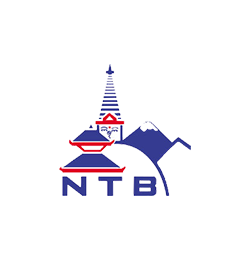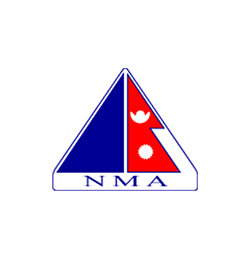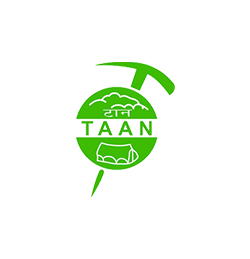
Pokhara an amazing valley, one of the most popular touristic in all Himalayan range, nature has certainly gifted Pokhara with awesome natural surrounding with pristine lakes, rolling green hills dotted with traditional villages in the shade of towering Annapurna Himalaya range of mountains with ever present stunning Mt. Machhapuchare ‘Fish Tail’ which reflects on its beautiful Phewa and Begnas Tal (lake).
Unlike busy Kathmandu, Pokhara city is spread out with perfect ambiance environment, a unique sub-tropical valley in the Himalaya and probably in the world, where one can marvel the beauty of the Himalayan landscape s.
Situated on Nepal mid west, linked by main highway of 220 km driving distance from Kathmandu, and by air 30 minutes flight.
Pokhara offers variety of outdoor sports beside its cultural typical country traditional villages with outstanding scenery of the landscapes, snow capped mountains, moderate tropical climate, and beautiful pristine lakes of Begnas, Rupa and Phewa.
Pokhara, a starting point of Nepal’s most popular adventure destinations, where most of the trekking, mountaineering expeditions begins and ends, it’s a also an ideal plce for all types of holiday makers at present Paragliding and Ultra light flight among popular activities on air with alluring views of snow capped peaks and aerial look of Pokhara valley.
Places of interest around Pokhara City:
Highlight of Paragliding in Pokhara
Mountain Views:
While in Pokhara it hard to miss the stunning Annapurna range which forms its backdrop. Annapurna massif includes A I (worlds 10th highest at 8,091m / 26,545ft) Annapurna South (7,219m-23,693ft), Gangapurna (7,455m-24,457ft) and Annapurna III (7,555m-24,787ft) ever present Mt. Machhapuchhre ‘Fish-Tail’ (6,997 m) and beyond east worlds 8th highest Mt. Manaslu (8,163m).
All these views can be seen in the comfort of your hotel rooms for more views one can take a mountain flight form 45 mins to an hour, Ultra Light flight or more sporty adventure taking a paragliding from the hills of Sarankot.
Phewa Lake:
Phewa Lake 2nd largest lake of Nepal, the main attraction in Pokhara adding another natural jewels to its beauty, morning time where you can view the reflection on the lakes, an hour of boating will serenade you with amazing scenery and visit the nearby island Barahi Temple or visit the shoreline and enjoy the green Raniban (forest) surrounding with exotic birdlife.
Other lakes within Pokhara valley are Begnas and Rupa Tal an hour drive east one can see while on flight from Kathmandu to Pokhara also.
Barahi Temple:
One of the most important monument in Pokhara, located in the centre of Phewa Lake on a small island in a peaceful environment 2 storied pagoda temple dedicated to the boar manifestation Ajima, the protector deity of Hindu mythology representing female Shakti (power) large number of Devotees can be seen on Saturday with fowl and goats sacrifice to the deity.
Seti Gorge:
Pokhara’ natural wonder view of Seti gorge as Seti River flowing right through the city, the boisterous river running underground at places, amazing to watch as it hides in some areas with just 2 meters wide, with 20 m depth which beyond imagination, there are two areas one can see the depth of Seti Gorge, just from the centre of local bazaar at Mahendra Pul (bridge) and just little further at KN Sing Pul (bridge) with lovely park and garden.
Devi’s Fall:
Another attractions of Pokhara is the cascading beautiful waterfalls popularly known as Devi’s Fall, locally called as Patale Chhago (Hell’s Fall) located just 2 k.m. south west of the city on the Siddhartha Highway a nice pleasant area with views of tremendous waterfalls, monsoon and mid September time raging volumes of waters makes this place more interesting and impressive.
Caves of Pokhara:
There are two main caves for visiting or explore another nature wonders’ in Pokhara is the Mahindra Gufa (cave) people calls it a House of Bats, a 2 hr hike and short of 45 minutes to the north of Pokhara (torch / flash lights recommended while visiting caves) enter for some time and view the large limestone, stalactites and stalagmites as well the bats hanging.
Another cave in Pokhara is Gufteswor Gufa just walking distance from Devis’ Fall across the street the entrance is wide with down steps with a shrine of Shiva one can head further down to view the raging Seti River entering a channel into the cave.
The Old Bazaar:
It will be wonderful to observe the local life visiting the old areas of Pokhara with traditional bazaar and ethnical diverse traders. In its temples reflects the Newari architecture of Kathmandu valley, although Pokhara majority are of hill people the Gurung and some Magar, Tamang with Hindu Brahmins, Chettries and Dalits. The local bazaar has important and interesting shrines called Bindhayabasini Mandir (temple), this white dome shaped dominates a spacious stone paved courtyard on a shady hill top with excellent views of the bazaar and the Annapurna mountains.
Buddhist Peace / Shanti Stupa:
An excellent next view point a short hike a drive near to the top ridge of Pokhara at Shanti or Peace Stupa, located south of Phewa Lake on a ridge top.
Shanti means Peace. This beautiful spot offers tremendous views of Pokhara valley and of the snowcapped mountains towards north.
Sarankot Hill:
One of the highest hill top of Pokhara Valley offers great vista of Annapurna range of mountains with Mt. Machhapuchare and Mt. Manaslu, Lamjung Himal as far to Dhaulagiri peaks towards west, including valley landscapes with Lake Phewa, this hill top offers striking sunrise and a platform for Paragliding also.
International Mountain Museum:
Another recently added in Pokhara is the Mountain Museum the first of its kind in Nepal, established and built by Mountaineering Association (NMA),
on 1st Nov 1973, initiated the establishment of International Mountain Museum (IMM) in Pokhara. The basic objective for its establishment was made to record, document and chronicle the past and present development of mountaineering activities in the world in general and to preserve the saga of the momentous feats in the history of mountaineering in the Himalayan peaks in particular. The foundation stone of IMM was laid on 1 Dec, 1995. The soft opening of IMM took place on 29 May, 2002 where it was officially opened on 5 Feb, 2004.
An interesting place to gather knowledge of the mountains, expeditions, flora / fauna, geography, history of Nepal mountaineering and more, located just near the main local area of Pokhara.






